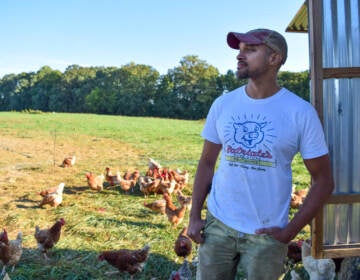How farmers in New Jersey’s Pinelands grapple with the environmental toll of Thanksgiving cranberries
Cranberry farmers in the Pine Barrens must strike a balance between productive farming and protecting a beloved ecosystem.
Listen 09:37
They're a Thanksgiving favorite, but cranberries come at an environmental cost. Third-generation cranberry grower Bill Cutts (pictured here) says his farm uses far fewer insecticides today, compared with 30 years ago. (Image courtesy of Dave Smith)
This story is from The Pulse, a weekly health and science podcast.
Subscribe on Apple Podcasts, Stitcher or wherever you get your podcasts.
Whether sauce, jelly or fresh, cranberries have to be on the table for Thanksgiving. But the tradition comes with a heavy-duty environmental burden: Growing the fruit requires a lot of water and land, as well as strategies, usually chemical, for fighting the many pests that thrive in swampy cranberry bogs.
In the Pine Barrens of New Jersey, however, many families have been cultivating cranberries for generations, and they don’t see their livelihoods as being in conflict with environmental stewardship. Instead, these growers take pride in being guardians of a rare and remarkable ecosystem.
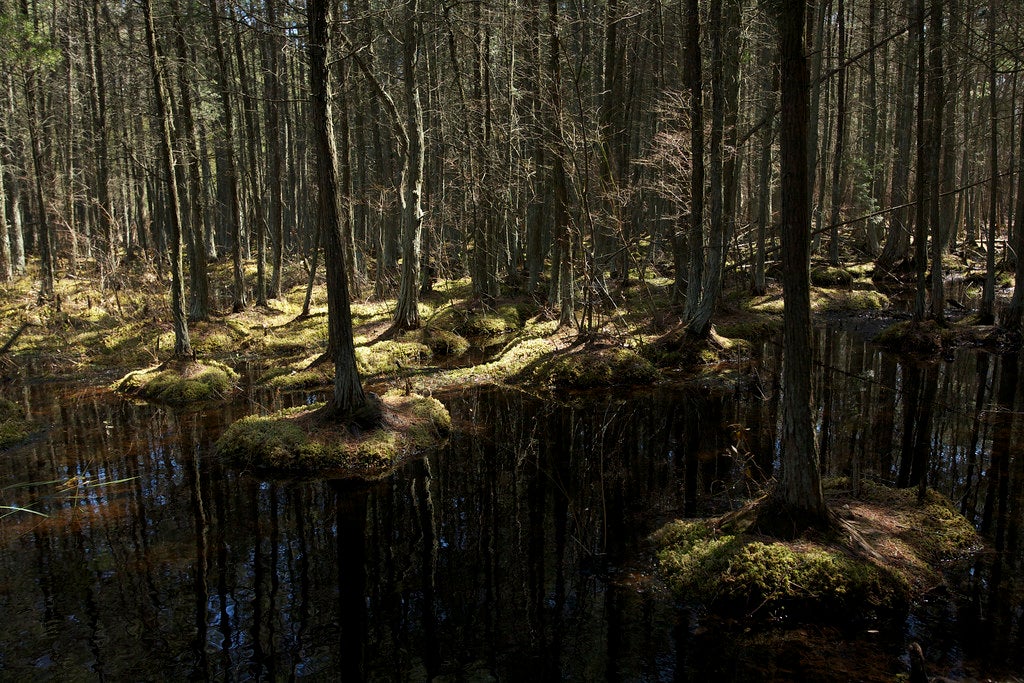
The Pine Barrens are a spread of dense coastal forest in South Jersey — a million acres, stretching over more than a fifth of the state. Here, you’ll find a history of outlaws and smugglers, plus many a ghost story.
Over millennia, the Pine Barrens have been shaped by forest fires and coastal floods. These harsh conditions gave rise to a unique assemblage of species, many that can’t be found elsewhere.
Rattlesnakes slither, bobcats slink, and bald eagles soar across the landscape. Rare orchids, carnivorous plants, and pygmy pitch pines, with gnarly branches and multiple trunks per tree, sprout from sandy, acidic soil, which the locals call “sugar sand.” Rivers and streams flow with what looks like tea, the water dyed reddish-brown from cedar trees.
Commercial cranberry farming started here in the mid-1800s. Before that, all sorts of extractive industries passed through the Pine Barrens. Charcoal, iron, glass, brick and paper were all mined or made here. Eventually, these industries moved elsewhere, leaving behind a decimated ecosystem.
“Frankly, the Pines had been pretty seriously worked over,” said Joe Darlington, a fifth-generation Pine Barrens cranberry grower.
The families that wanted to stay in the Pine Barrens “bought the land inexpensively, and in very large tracts,” said Darlington. “They started cultivating the cranberries that were growing there naturally.”
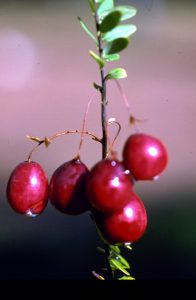
From the beginning, these families understood the importance of preserving the land around their cranberry farms, according to Darlington. “[We] kept the Pines the Pines, until environmental groups decided that they needed to. We were already doing it,” he said.
Steve Lee, another fifth-generation cranberry farmer, said, “We look at cranberries as part of a larger system around the bogs.”
The berries grow wild all over the Pinelands. Canoe down any river or stream, and you might be able to collect them right off the riverbeds.
“They belong in wetlands,” Lee said. “If you find a cranberry vine growing in the New Jersey Pinelands, by definition you are in a wetland. And we’ve learned to live in harmony with the wetlands.”
Nothing without water

A big reason for protecting the natural tapestry around cranberry bogs is water. It’s a common misconception, popularized by Ocean Spray commercials, that cranberry bogs are always underwater. But it’s true that water is important — crucial, really — to cranberry farming.
It’s hard to pick cranberries from vines on the ground. So to make harvest easier, most cranberry growers flood their bogs in the fall. The berries float to the surface, then growers use harvesting machines called “egg beaters” to knock them off the vine.
In the winter, the bogs are flooded again. This time, the water insulates the plants from frost.
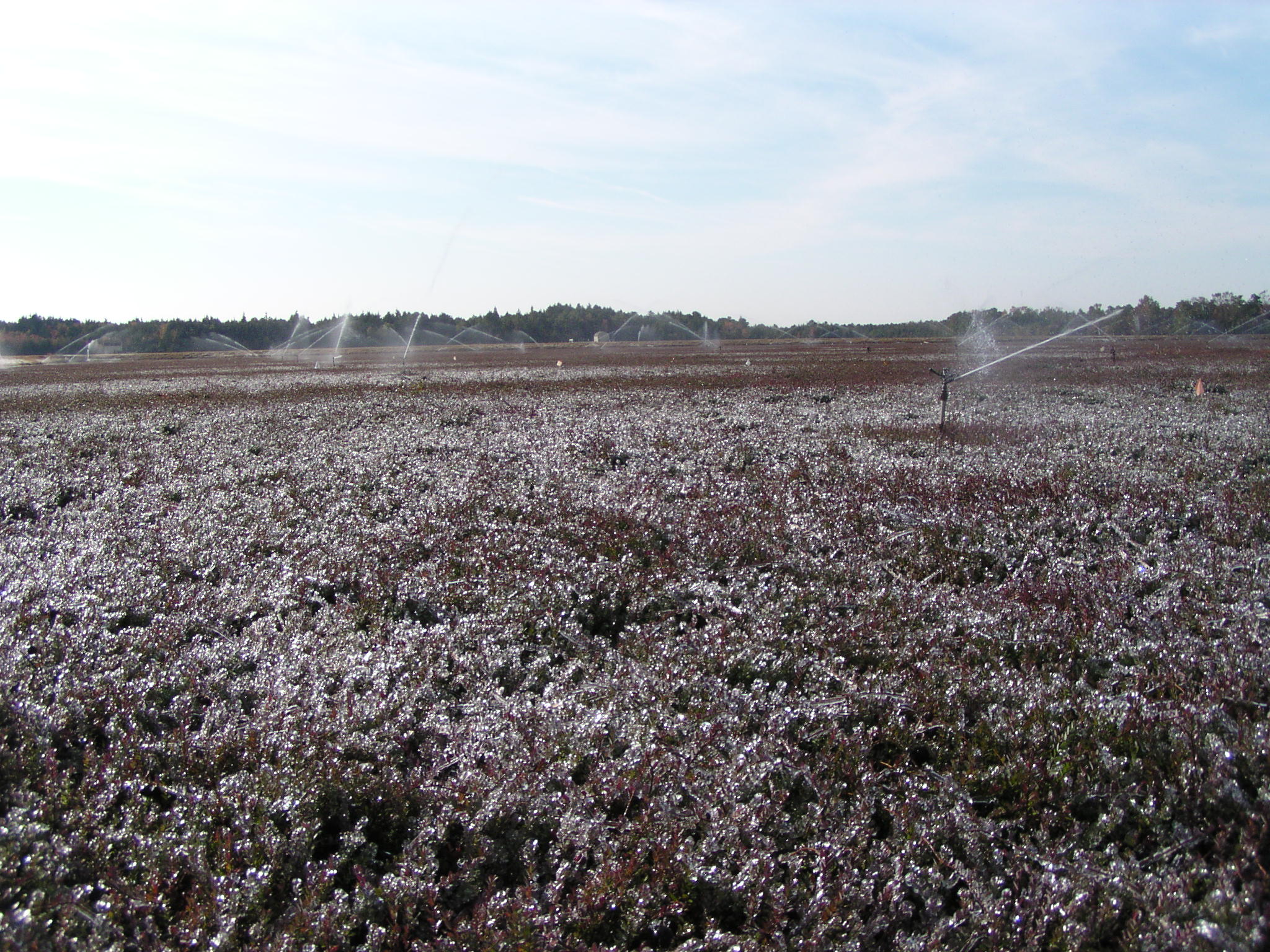
Underlying the Pine Barrens is a natural aquifer: 17 trillion gallons of bacterially sterile, sand-filtered water, which scientists have compared to melted glacial ice.
The farmers here divert water from nearby streams and rivers to flood their bogs. It’s an interconnected system that allows them to share and cycle water between one another.
Mike Haines, a fifth-generation grower, explained that he coordinates with neighboring farms when he has too much or too little water.
“We’ve got to work with them, like, ‘Hey, I’m sending some water your way,’ or ‘Hey we need some water,’” he said.

Mike and his sister Stef Haines help run their family business, Pine Island Cranberry Co. They sell their cranberries through Ocean Spray, which is a private co-op of some 700 cranberry farms.
Ocean Spray dominates the U.S. market. The co-op takes berries grown by farmers, markets them, and processes them into products like juice, Craisins, supplements, and the cranberry sauce you might be having for Thanksgiving.
Water is central to the operation. Stef Haines likes to say, cranberry growers aren’t farmers. They’re water engineers.
“If we don’t have a clean, abundant water supply, then we don’t get anywhere,” she said.

For a multi-generational farm to succeed, she said, it has to consider long-term sustainability. Her grandfather built the family business accordingly.
“He was the one who understood the importance of farming not for himself, not even for the next generation, but for my generation,” she said. “A lot of what we’re doing now is built upon what he was doing back in the ‘40s and ‘50s.”
To ensure clean water, you need to control a lot of land.
Back when grandfather Haines was running the business, land was still relatively cheap. So he bought a lot of it. “Just to make sure that nobody else could get to it, keep it from developers and that kind of thing,” Stef Haines said.
Steve Lee said his family did that too. “I can remember people coming to my father trying to buy land, and he wouldn’t sell,” he said.
“I don’t care if you want 50 acres to build a house,” he added. “We don’t sell land. That’s not our business. Our business is protecting land — forested land and wetlands and watershed areas, so that we can protect our own water supply.”
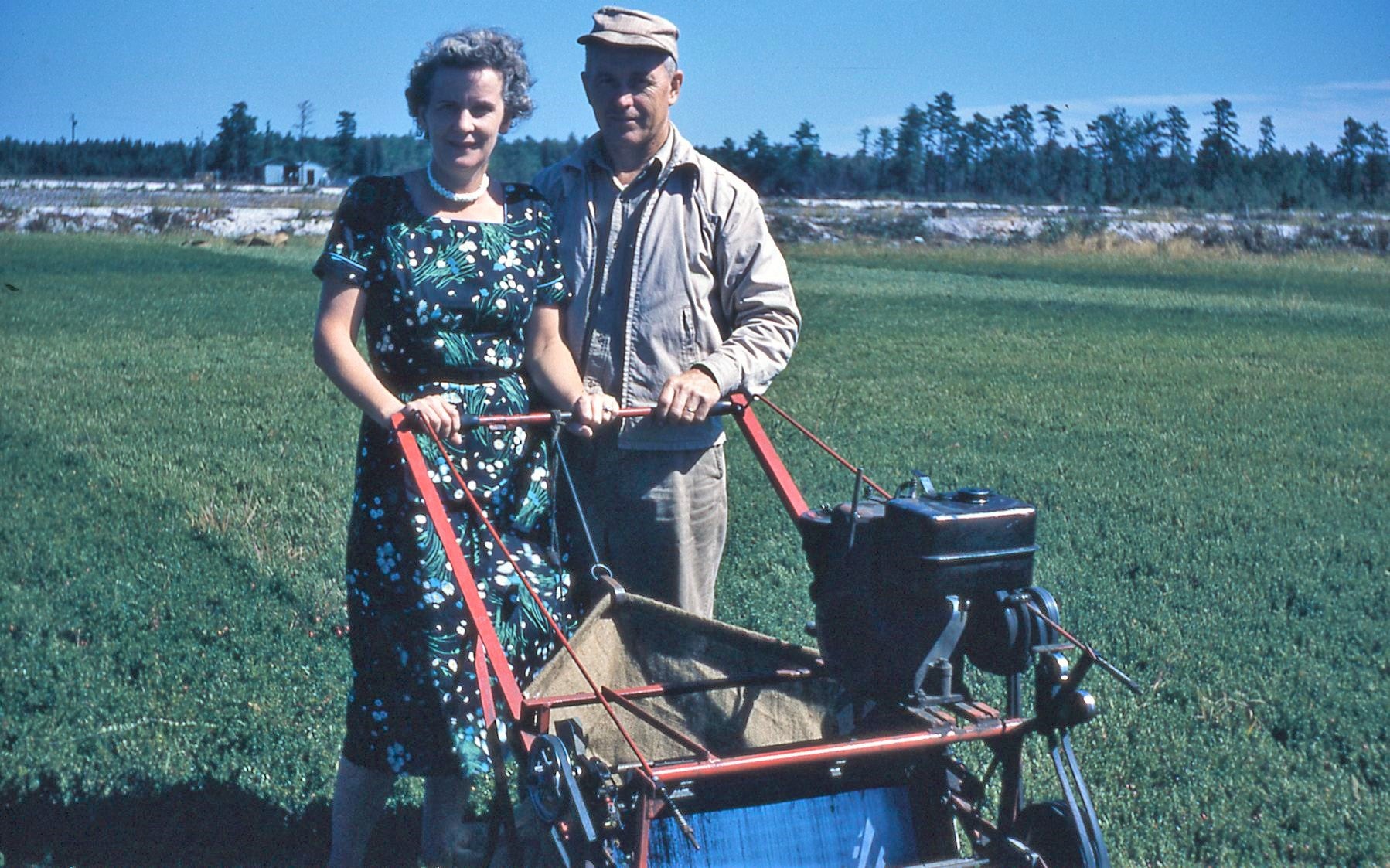
In 1978, the federal government created the Pinelands National Reserve, the first protected area of that kind. Joe Darlington said it further helped prevent development.
“If the Pinelands hadn’t come into being when it did, we were scheduled to have a 5,000-unit mobile-home development immediately upstream of our farm,” Darlington said. “You can be sure that would have affected our water quality.”
In New Jersey, growers follow this general rule of thumb: For every 1 acre of producing cranberry bog, they maintain 9 acres of supporting woodland to protect the watershed.

The Haines family, for instance, owns 14,000 acres — just 1,400 of which produce cranberries.
That ratio is lower in other places. In Wisconsin, which produces about 60% of the fruit in the U.S., growers maintain 6 acres of surrounding land for every acre of cranberry production. In Massachusetts, which produces about 25% of the country’s cranberries, it’s just 3 to 5 acres.
Environmental toll
It’s a hard balance, keeping the land and water healthy, while also keeping production up.
Cranberry farming can pose a major threat to the environment, largely because of pesticide and fertilizer runoff into surrounding waterways. In recent years, this environmental cost has drawn media attention.
“Cranberries embody the very wholesomeness and joy of a holiday spent among family and friends — but the reality of this red fruit is more insidious.” So goes the hook from a 2014 VICE article, entitled “Cranberry Bogs Are Serving Up Environmental Destruction.”
Here’s the gist of it: Cranberries are a fussy crop. On top of that, the settings they grow in — moist, swampy areas — attract lots of insects, fungi, parasites and weeds. Because cranberries are native to North America, a lot of these pests evolved alongside them, and have tailored strategies for attacking the fruit.
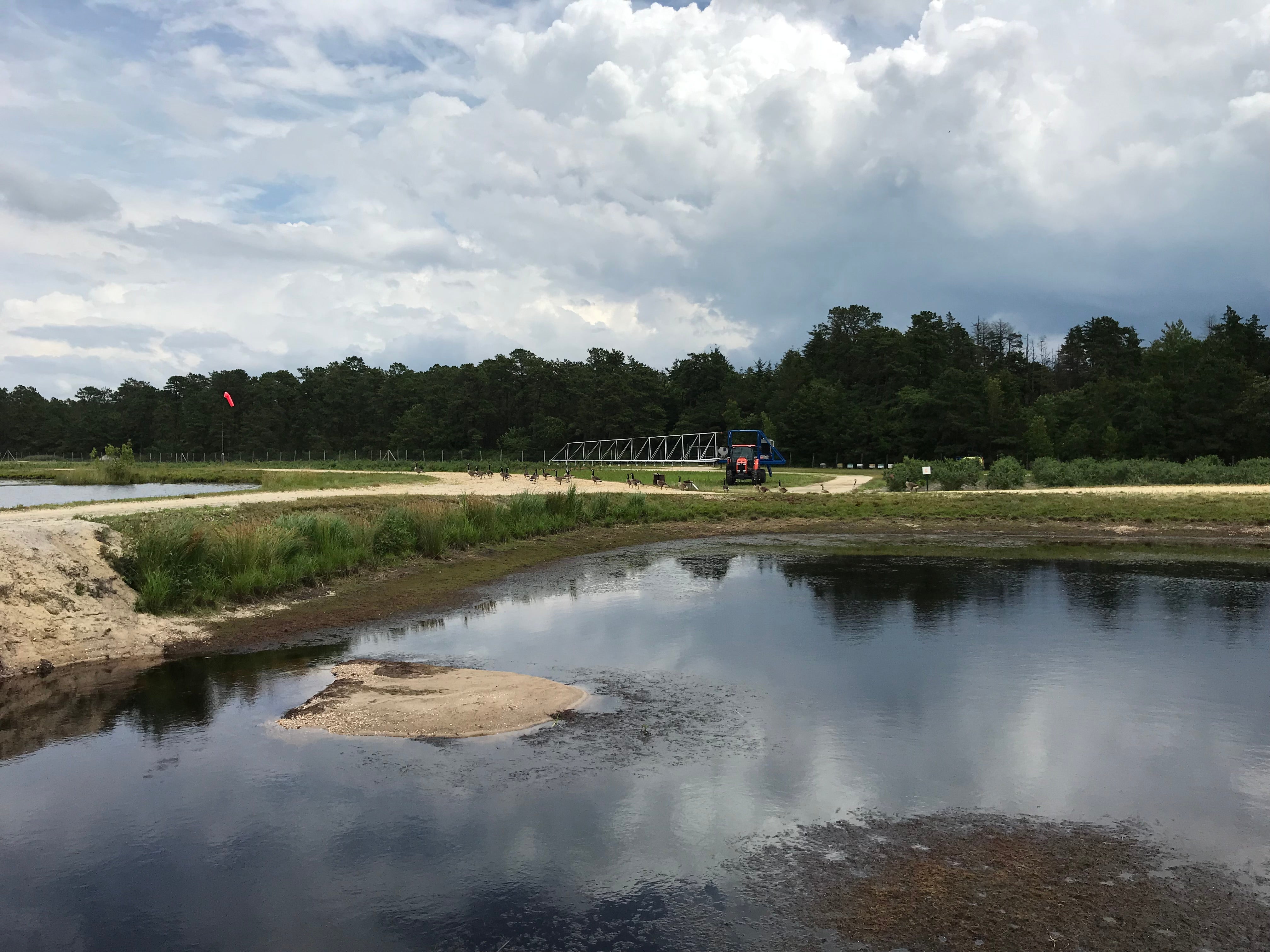
Many conventional cranberry farmers say that, for these reasons, organic cranberry production is not feasible, at least not at a large scale. Currently, organic farming, which takes place mostly in the Pacific Northwest, makes up less than 1% of the overall cranberry market.
Given its hold on the market, some advocates for organic cranberries say Ocean Spray has the power to shift the industry toward organic farming.
More than a decade ago, Ocean Spray did, in fact, experiment with having some organic fields, but ultimately it proved too costly and labor-intensive, and the co-op dropped it.
Today, the vast majority of cranberry farms still use a range of synthetic chemicals, which get discharged into local water bodies, and can be harmful. It doesn’t help that regulation is murky. A legal loophole makes runoff from cranberry bogs exempt from the federal Clean Water Act.
None of the growers interviewed for this article use organic methods, but they say they use chemical inputs sparingly.

“With fertilizer, we do soil and leaf tissue testing, so we know exactly how much we need to put on,” said Bill Cutts, a third-generation grower. “It’s very targeted and very limited. It’s not, ‘Well, we’ll just dump a whole bunch on, and the more the better.’”
On the contrary, cranberries get vegetative with too many nutrients, Cutts said. “If you put too much on, it actually hurts. You get less berries instead of more.”
Subscribe to The Pulse
With pesticides, the farmers do targeted spot treatments. They hold runoff in reservoirs around their cranberry beds for weeks after spraying, to allow the chemicals to dissipate some, instead of being released directly into water bodies.
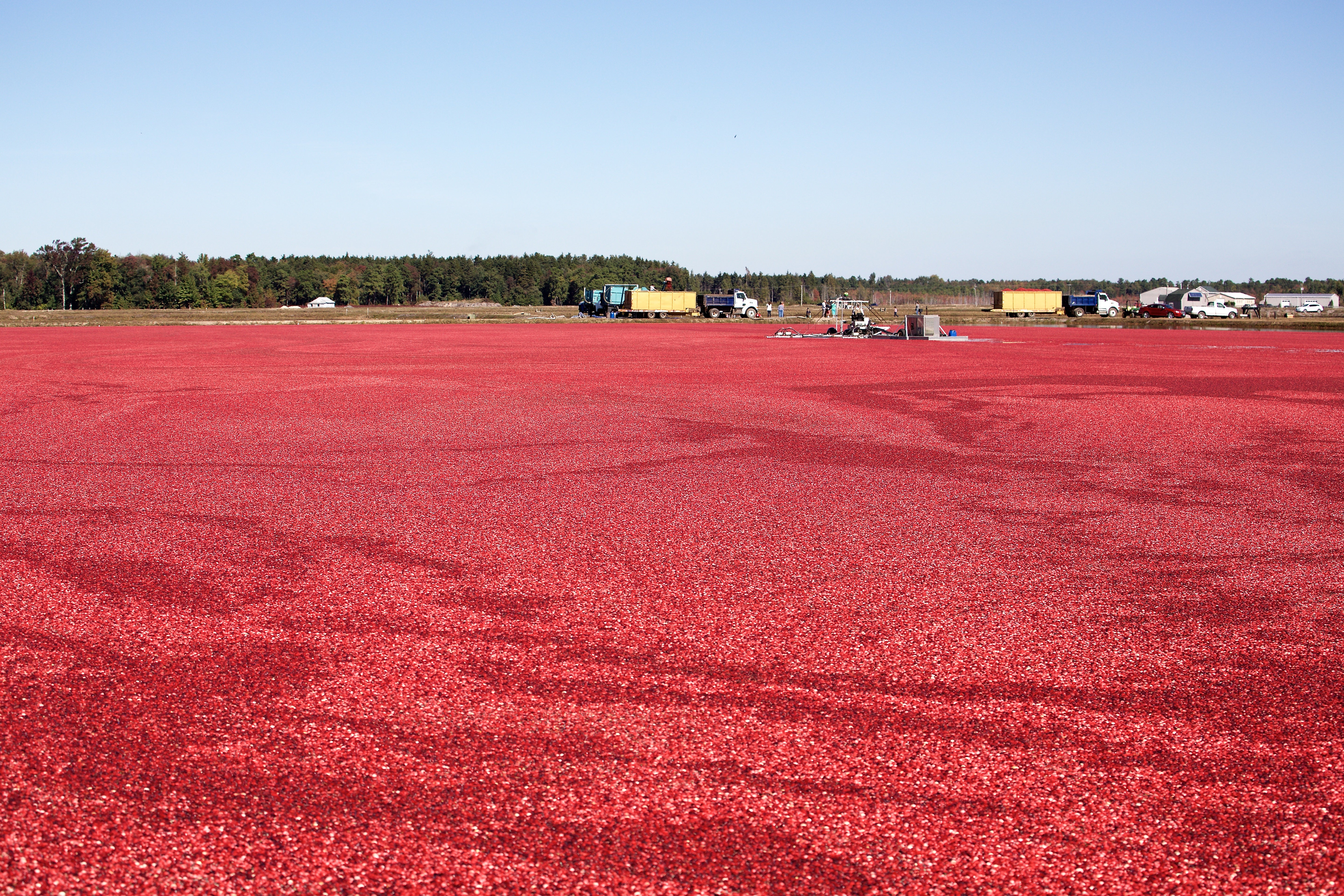
In recent decades, Cutts said, farmers in the Pinelands have also started to use fewer chemicals, as well as gentler ones, in place of broadband pesticides that kill everything.
“Thirty years ago, you might put on three or four or five insecticides just by the calendar,” he said. Now, his farm might use a general insecticide just once every two years.
But the newer, soft pesticides might be getting the farmers into some trouble. They don’t work against a particular insect: the blunt-nosed leafhopper.
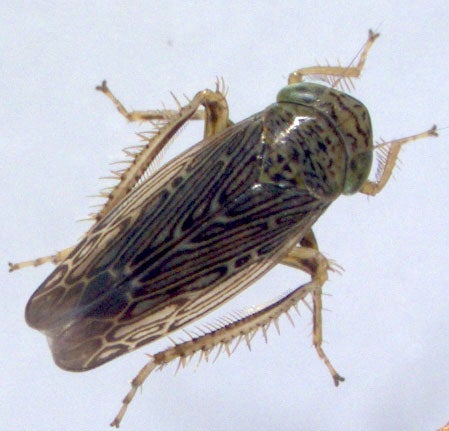
The insect transmits a phytoplasma, or bacterial parasite, that causes something called false blossom disease. In the 1920s and ‘30s, that disease nearly annihilated cranberry farming in New Jersey. At its peak, there were around 14,000 acres of cranberry production in New Jersey. Today, there’s only 3,000 or so.
In the last decade, local farmers and researchers have noticed that leafhoppers are starting to return, accompanied by increasing incidences of false blossom disease.
Today’s farmers grew up hearing family horror stories about the false blossom crisis of the ‘20s and ‘30s.
“That’s why when we hear false blossom might be coming back, we’re very worried,” Steve Lee said. “But we’re looking for a long-term solution.”
In search of a strategy
Just down the road from the Lees’ and Haineses’ farms is the Rutgers University Marucci Center for Blueberry and Cranberry Research.
Here, scientists like Cesar Rodriguez-Saona are trying to find ways to fight against the disease — in a sustainable way.
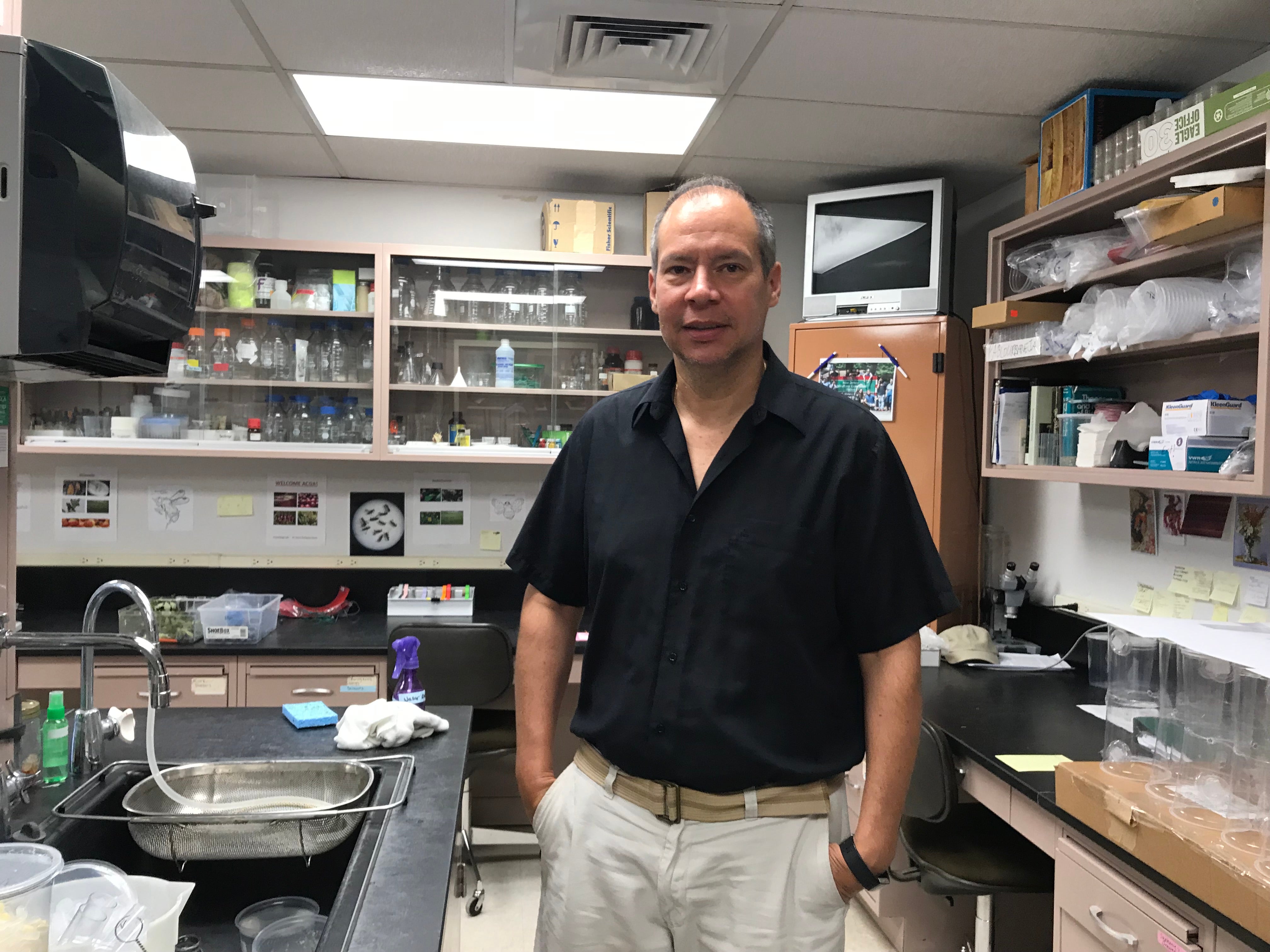
Rodriguez-Saona studies something called integrated pest management, which involves looking for alternatives to chemical pesticides.
Those alternatives might be boosting plants’ natural defenses, encouraging populations of “natural enemies,” or predators, of cranberry pests, and also, simply, teaching growers to identify and monitor for insects so they know when they need to be concerned.
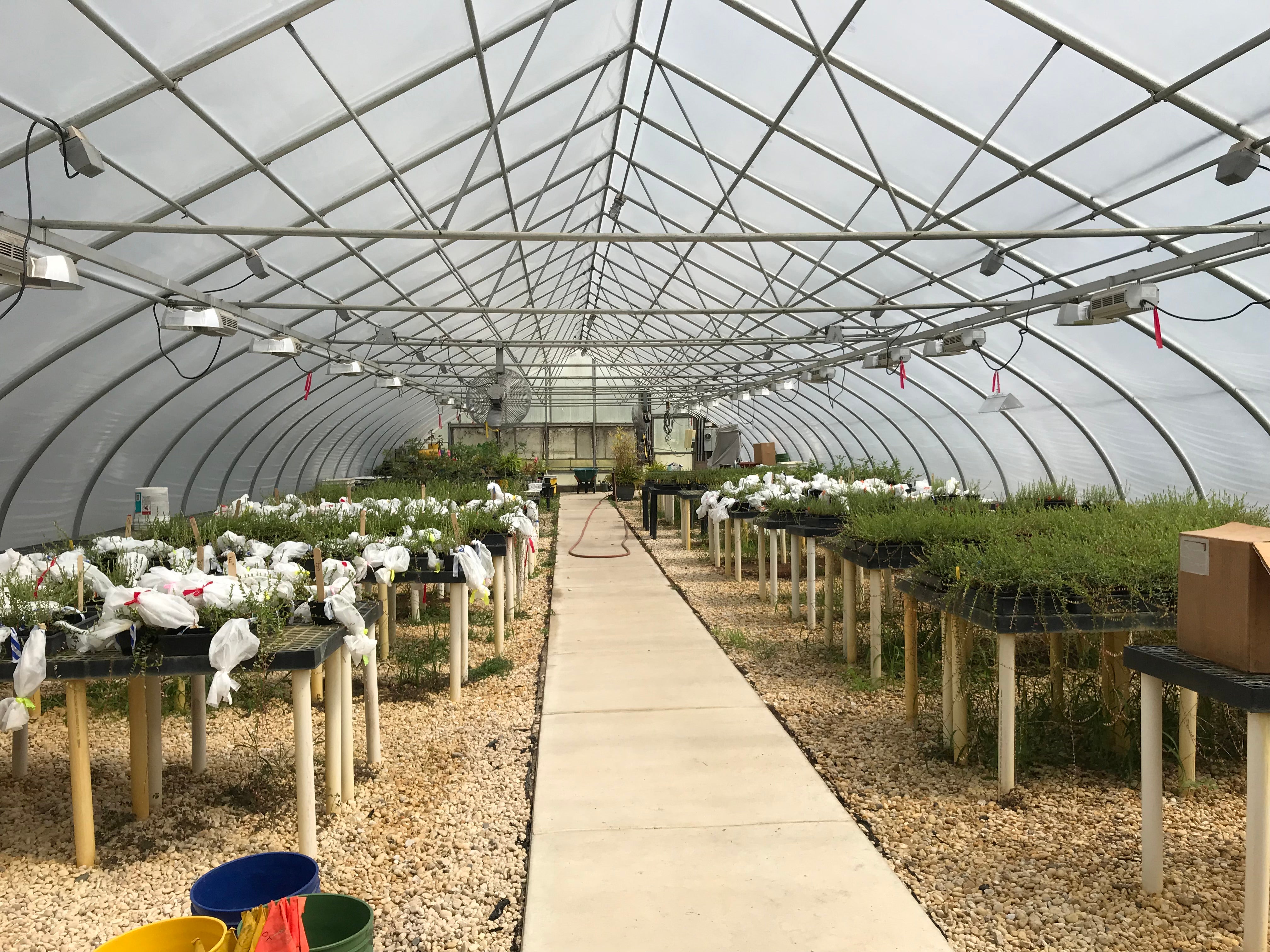
Currently, Rodriguez-Saona is studying the transmission and progression of false blossom disease in cranberry plants grown in greenhouses.
He’s already found that the bacteria that cause false blossom disease seem to alter certain features of cranberry plants. They might reduce the plants’ immune responses, for instance, or redistribute nutrients from the roots to the leaves of the plants, to attract insects.
“We’re finding that caterpillars perform better on plants that are infected,” he said. “They are growing bigger and eating more.”
He is also monitoring what kinds of natural enemies exist around local cranberry beds. There could very well be leafhopper predators around, he said, such as parasitic wasps that attack the eggs of leafhoppers.
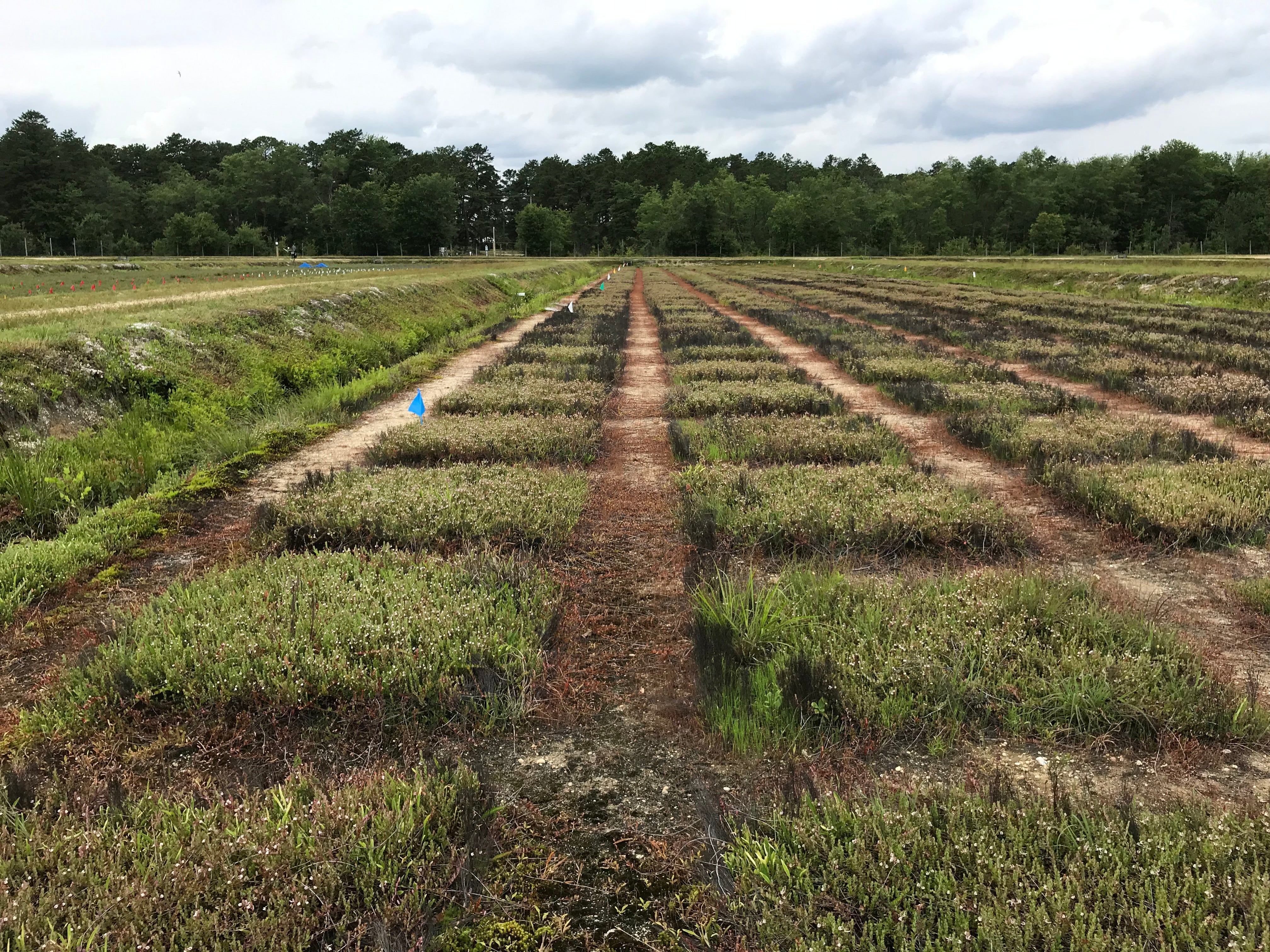
Rodriguez-Saona’s colleagues at the Marucci Center are also working on breeding cranberry varieties that are resistant to fungal fruit rot, another huge threat for local farmers.
Since New Jersey is the southernmost state for cranberry growing, the farmers here are particularly susceptible to getting hit by fruit rot. With breeding, the researchers hope, growers will eventually be able to cut down their fungicide applications from four times a year to one or two.
The relationship between the farmers and the scientists is a tight-knit one, in no small part because the cranberry industry funds a lot of this research.
From the farmers’ perspective, investing in science is part of the constant adaptation and innovation that goes into cranberry growing.
Unlike corn or soybeans, cranberries are a niche, small-specialty crop, Joe Darlington said. “So we’re always developing growing techniques, the machinery that we use, products to go to market. It’s kind of in our DNA that we deal with whatever comes down the pike and figure out a way to overcome it.”
In winter, the Pinelands growers put up string to keep swans out of the bogs. That idea originally came from the Haines family. The Cutts family then built on it, designing a machine to wind the string up.
In the spring and summer growing season, the farmers use a fertilizer spreader designed by the Lees. Come autumn, they use a cranberry-picking machine developed by the Darlingtons.
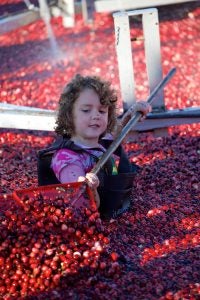
Currently, the cranberry industry is struggling. For a number of consecutive years, supply has been higher than demand, and farmers have had to collectively agree to destroy a portion of their annual crop, to keep the market competitive.
Consumers have grown wary of sugary cranberry juices. That is driving the industry to look for new products, like dried cranberries, or cranberry supplements that come in pills and powders.
The Jersey growers said they’re used to weathering ups and downs together.
“That’s how we survive,” Bill Cutts said. “By helping and sort of feeding off each other.”
Unraveling back to nature
When a cranberry farm does fold, how the land bounces back remains an open question.
Ped Daneshgar, an ecologist at Monmouth University, has looked into this by visiting abandoned cranberry bogs across the Pine Barrens.
In a study published in August, he and his coauthors reported that it didn’t take long for the sites to slide back into a wild state.
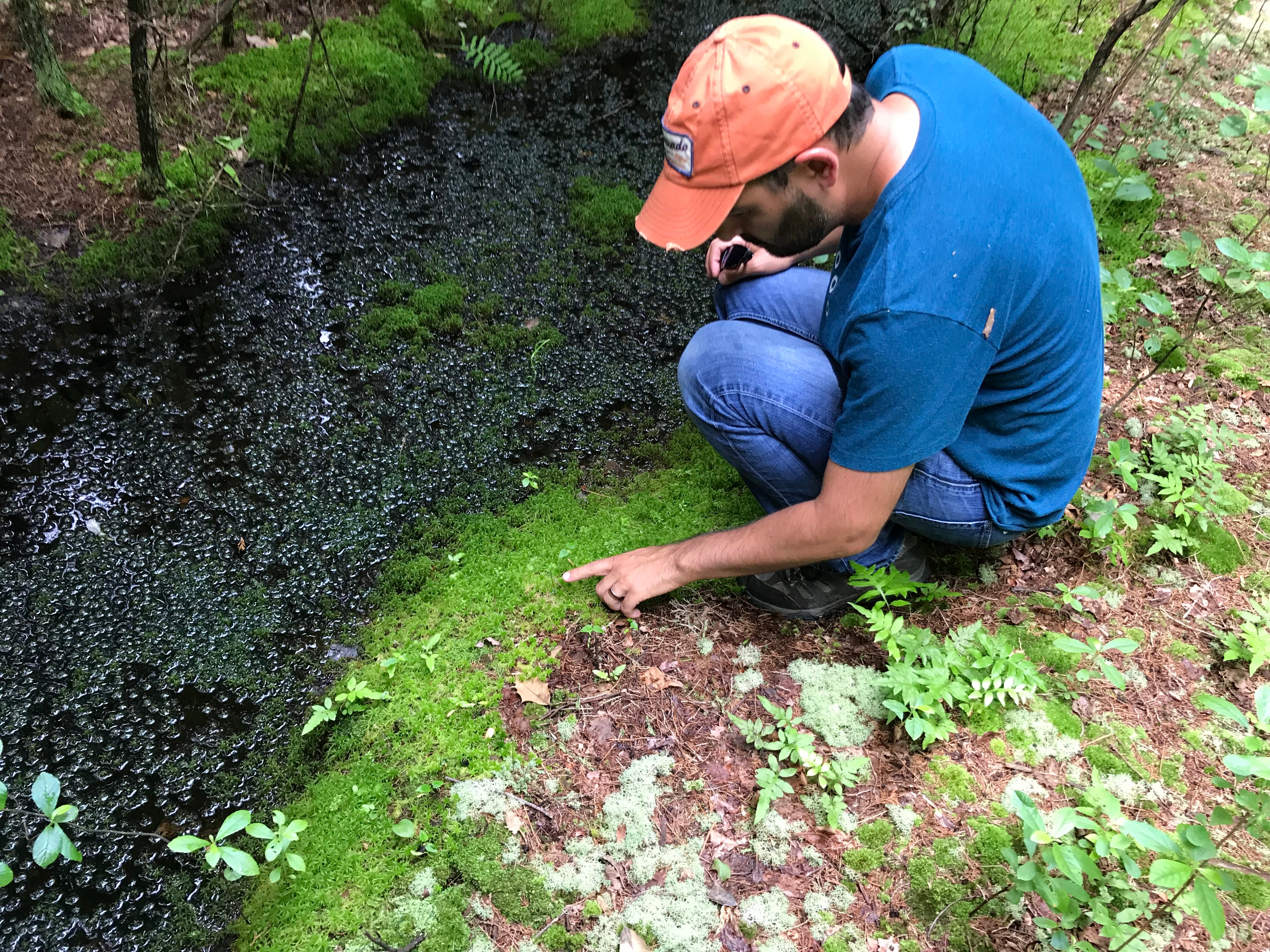
A recent trip to Double Trouble State Park, to visit a bog that was abandoned 65 years ago, revealed trees all around — pine, red maple, and lots of Atlantic white cedar, some as tall as 30 or 40 feet.
Underfoot, pine needles crunched. Blue jays screeched overhead, trying to shoo intruders from their territory.
What was once a thriving cranberry bog now seemed like a wild ecosystem, unexpected evidence of a swift return to nature, decades of heavy agriculture forgiven.
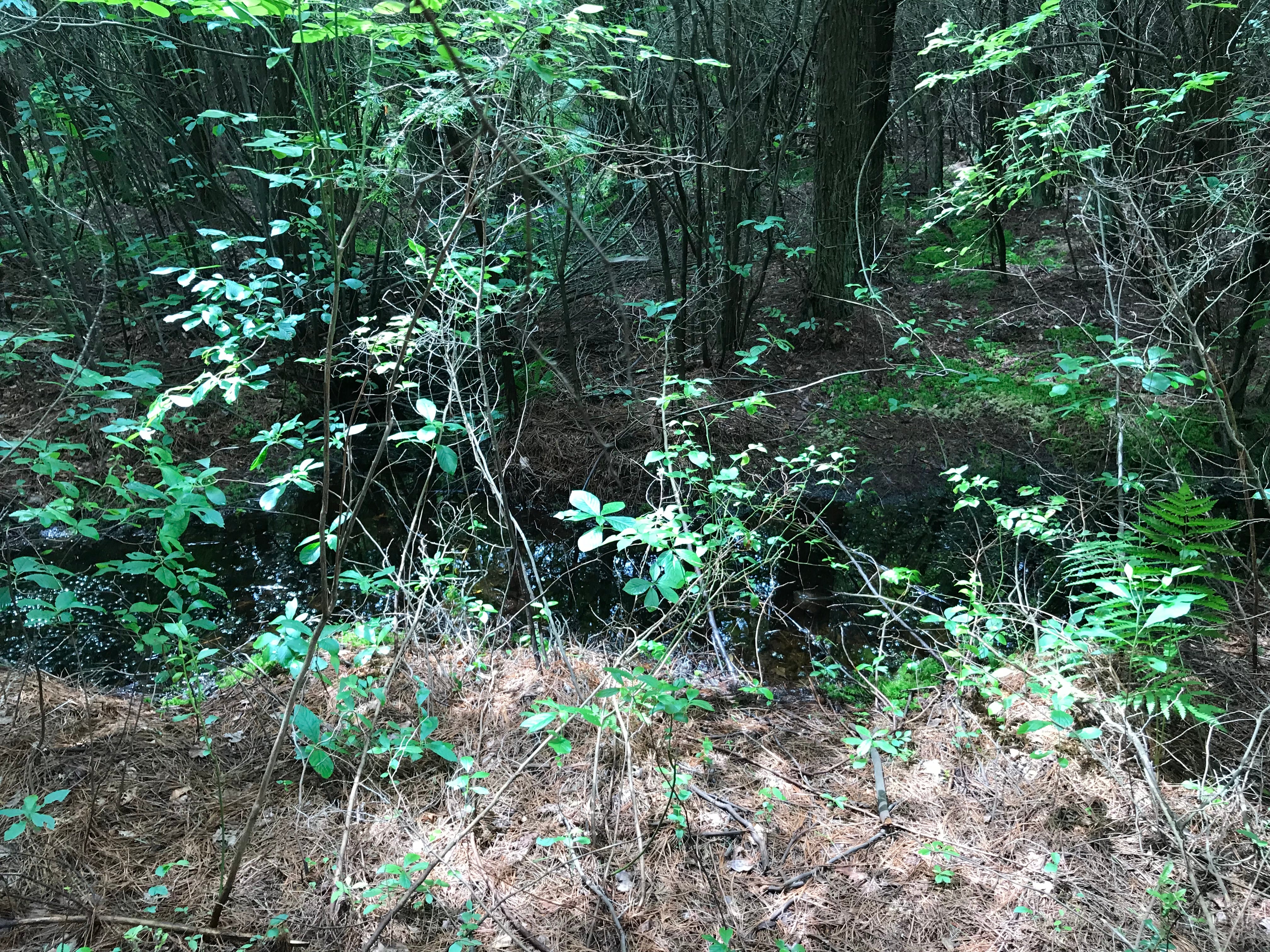
But what of the narrative that cranberry farming has an enormous environmental impact?
“Our work does not show that,” Daneshgar said. ”And I started this with the idea that we were going to find some really scary things.”
He was surprised to find that the effects of intensive cranberry agriculture seemed minimal — at least, with some time.
But, Daneshgar said, though nature seems robust here, it’s still crucial to pay attention to the immediate, short-term impacts of cranberry farming — particularly since his findings don’t necessarily apply anywhere else.
“I wouldn’t be able to draw conclusions about other places,” he said.
Instead, he said, “I think it’s more a testament of the Pinelands just being very resilient.”
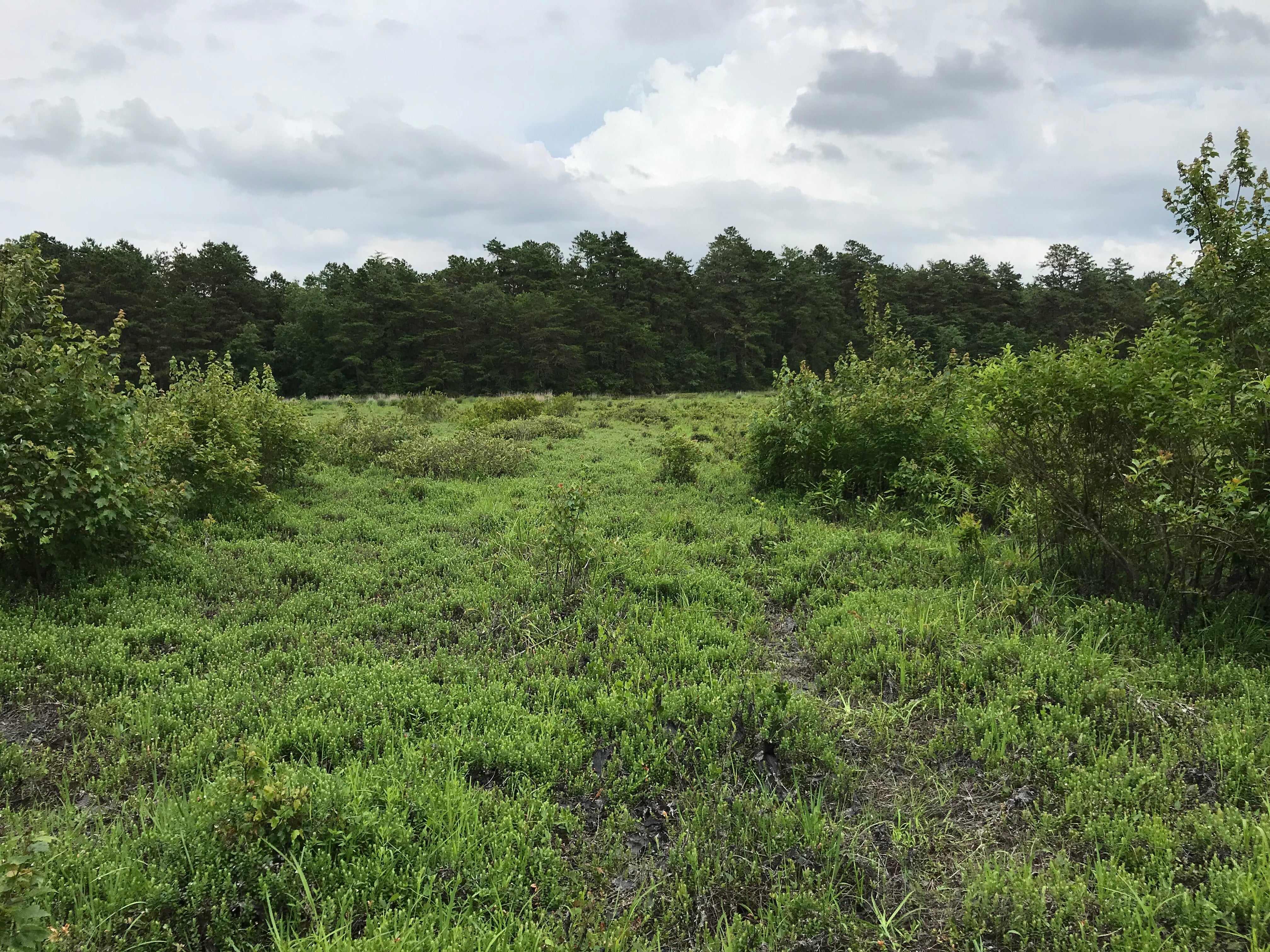
WHYY is your source for fact-based, in-depth journalism and information. As a nonprofit organization, we rely on financial support from readers like you. Please give today.





